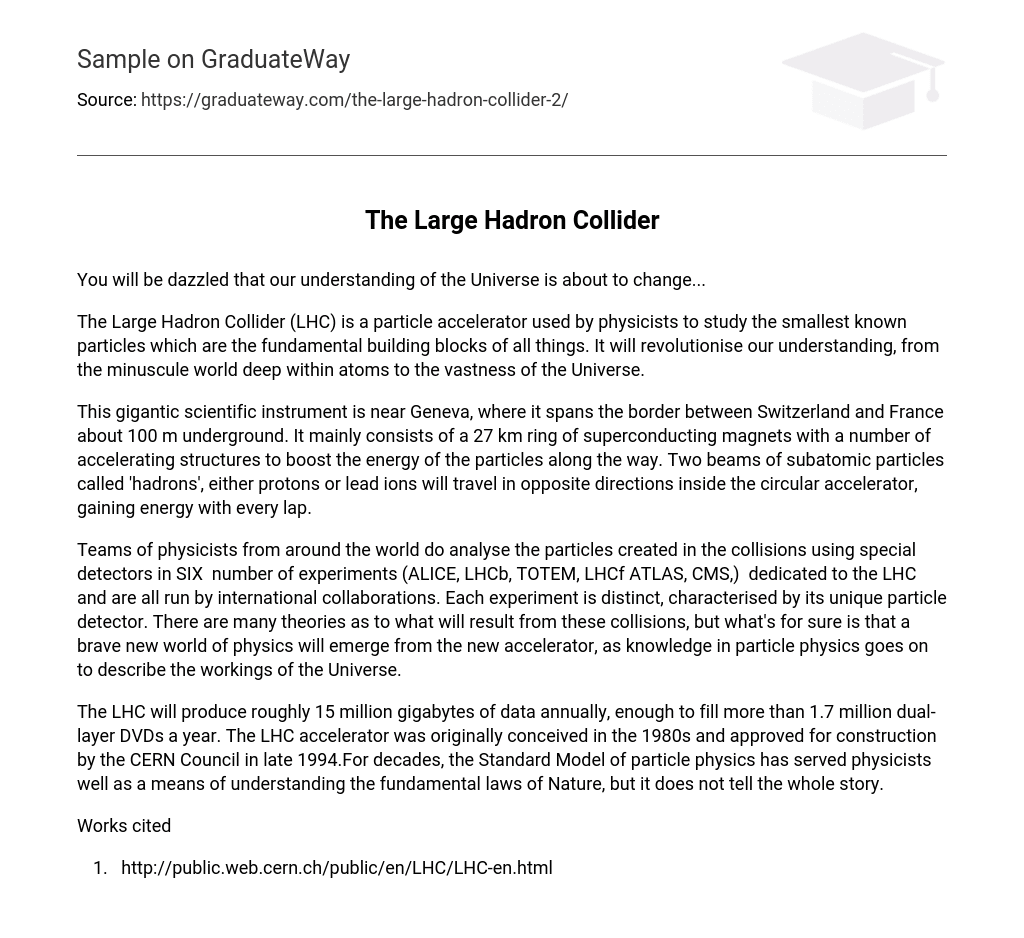You will be dazzled that our understanding of the Universe is about to change…
The Large Hadron Collider (LHC) is a particle accelerator used by physicists to study the smallest known particles which are the fundamental building blocks of all things. It will revolutionise our understanding, from the minuscule world deep within atoms to the vastness of the Universe.
This gigantic scientific instrument is near Geneva, where it spans the border between Switzerland and France about 100 m underground. It mainly consists of a 27 km ring of superconducting magnets with a number of accelerating structures to boost the energy of the particles along the way. Two beams of subatomic particles called ‘hadrons’, either protons or lead ions will travel in opposite directions inside the circular accelerator, gaining energy with every lap.
Teams of physicists from around the world do analyse the particles created in the collisions using special detectors in SIX number of experiments (ALICE, LHCb, TOTEM, LHCf ATLAS, CMS,) dedicated to the LHC and are all run by international collaborations. Each experiment is distinct, characterised by its unique particle detector. There are many theories as to what will result from these collisions, but what’s for sure is that a brave new world of physics will emerge from the new accelerator, as knowledge in particle physics goes on to describe the workings of the Universe.
The LHC will produce roughly 15 million gigabytes of data annually, enough to fill more than 1.7 million dual-layer DVDs a year. The LHC accelerator was originally conceived in the 1980s and approved for construction by the CERN Council in late 1994.For decades, the Standard Model of particle physics has served physicists well as a means of understanding the fundamental laws of Nature, but it does not tell the whole story.
Works cited
- http://public.web.cern.ch/public/en/LHC/LHC-en.html





